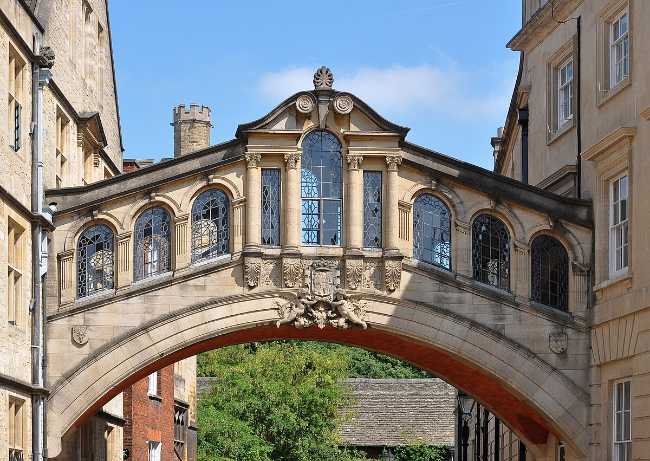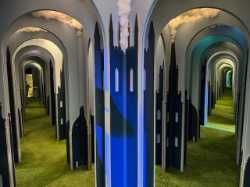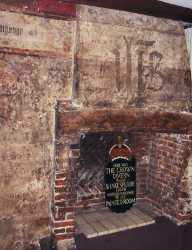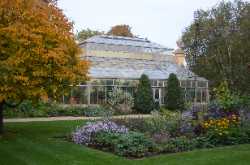Bridge of Sighs

The Bridge of Sighs, officially Hertford Bridge, is one of Oxford’s most photographed landmarks, gracefully arching over New College Lane to link the Old and New Quadrangles of Hertford College. Designed by Sir Thomas Jackson and completed in 1914, its elegant stonework and arched windows have drawn comparisons to Venice’s famous bridge, though its design more closely resembles the Rialto. Built to provide sheltered passage between college buildings, it has since become steeped in myth, including the playful legend that it was closed to encourage students to take the stairs for exercise. The Grade II listed structure frames views of the Sheldonian Theatre and the Bodleian Library, making it a favourite stop for visitors and photographers. Blending architectural charm with collegiate tradition, the Bridge of Sighs stands as a symbol of Oxford’s historic beauty and enduring academic life.
Oxford United KingdomThe Bridge of Sighs, officially known as Hertford Bridge, is a distinctive covered skyway that connects two parts of Hertford College over New College Lane in Oxford. Built in 1914 and designed by Sir Thomas Jackson, the bridge features ornate stonework and is a Grade II listed building. Despite being nicknamed after Venice’s famous Bridge of Sighs, its design is more closely inspired by Venice’s Rialto Bridge. The bridge serves as both a functional college connector and an iconic landmark, highly photographed from the street below. While access is restricted to Hertford College members, it is visible from New College Lane and nearby vantage points such as the Sheldonian Theatre. The bridge sits centrally in Oxford, close to key sites including Radcliffe Camera and the Bodleian Library, making it a must-see feature within Oxford's historic university area.
 Ashmolean Museum
Oxford
Ashmolean Museum
Oxford
 Museum of Oxford
Oxford
Museum of Oxford
Oxford
 Oxford University Museum of Natural History
Oxford
Oxford University Museum of Natural History
Oxford
 Pitt Rivers Museum
Oxford
Pitt Rivers Museum
Oxford
 History of Science Museum
Oxford
History of Science Museum
Oxford
 Bate Collection of Musical Instruments
Oxford
Bate Collection of Musical Instruments
Oxford
 Science Oxford Centre
Oxford
Science Oxford Centre
Oxford
 The Story Museum
Oxford
The Story Museum
Oxford
 Oxford Illusion Museum
Oxford
Oxford Illusion Museum
Oxford
 Abingdon County Hall Museum
Oxford
Abingdon County Hall Museum
Oxford
 The painted room
Oxford
The painted room
Oxford
 Christ Church Picture Gallery
Oxford
Christ Church Picture Gallery
Oxford
 Convocation House
Oxford
Convocation House
Oxford
 Oxford Bus Museum
Oxford
Oxford Bus Museum
Oxford
 Oxford Playhouse
Oxford
Oxford Playhouse
Oxford
 New Theatre Oxford
Oxford
New Theatre Oxford
Oxford
 Pegasus Theatre
Oxford
Pegasus Theatre
Oxford
 The North Wall Arts Centre
Oxford
The North Wall Arts Centre
Oxford
 Burton Taylor Studio
Oxford
Burton Taylor Studio
Oxford
 Modern Art Oxford
Oxford
Modern Art Oxford
Oxford
 Ovada
Oxford
Ovada
Oxford
 Sarah Wiseman Galler
Oxford
Sarah Wiseman Galler
Oxford
 Castle Fine Art Oxford
Oxford
Castle Fine Art Oxford
Oxford
 Oxford Castle & Prison
Oxford
Oxford Castle & Prison
Oxford
 The Grandpont House
Oxford
The Grandpont House
Oxford
 Christ Church College
Oxford
Christ Church College
Oxford
 Radcliffe Camera
Oxford
Radcliffe Camera
Oxford
 Sheldonian Theatre
Oxford
Sheldonian Theatre
Oxford
 Carfax Tower
Oxford
Carfax Tower
Oxford
 Martyrs’ Memorial
Oxford
Martyrs’ Memorial
Oxford
 University Parks
Oxford
University Parks
Oxford
 Christ Church Meadow
Oxford
Christ Church Meadow
Oxford
 South Park
Oxford
South Park
Oxford
 Port Meadow
Oxford
Port Meadow
Oxford
 Oxford Botanic Garden
Oxford
Oxford Botanic Garden
Oxford
 Oxford Covered Market
Oxford
Oxford Covered Market
Oxford
 Gloucester Green Market
Oxford
Gloucester Green Market
Oxford
 East Oxford Farmers’ & Community Market
Oxford
East Oxford Farmers’ & Community Market
Oxford